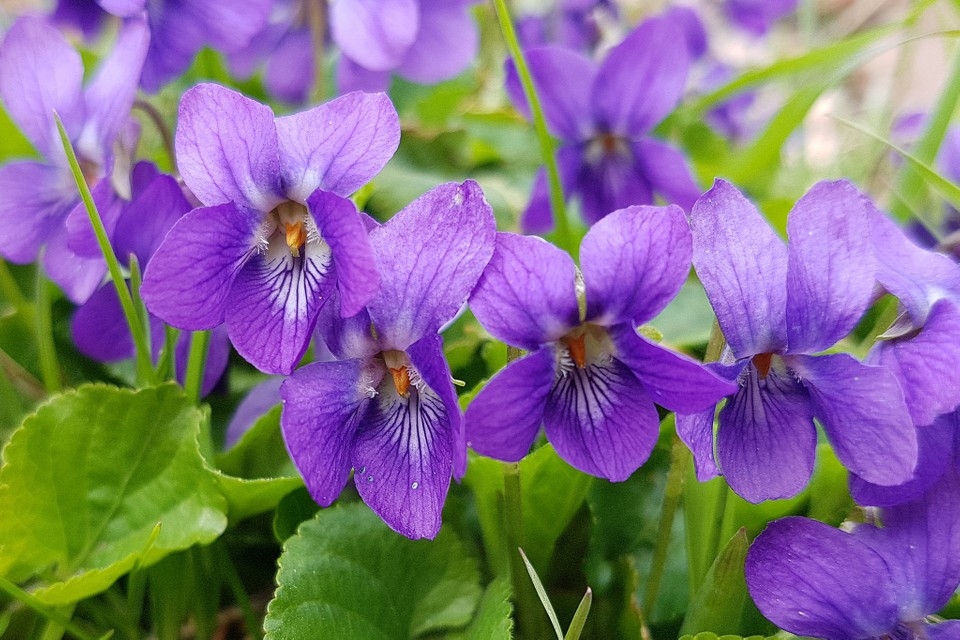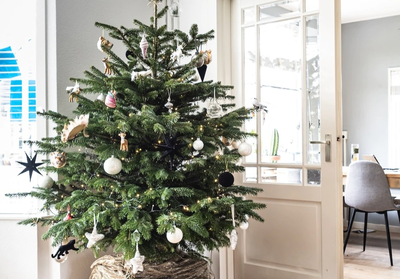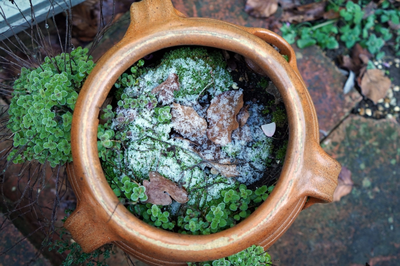
Caring for your violets
(copy)
Violets enjoy cool, damp humus soils. Their natural habitat is in shady hedgerows or banks sharing similar conditions to the wild strawberry and primrose. Try to imitate these conditions when planting in the garden.
Dappled shade under deciduous trees and shrubs is the ideal position where they will be able to avoid hot, dry summer conditions, but will be exposed to the winter sun which will encourage flowering.
On receiving your plants
If you receive your plants during the spring, March, April, May or June, it should be possible to plant your violets straight away, in a similar position described above. If this is not possible a North facing slope or in the shade of the house would also do. Choose a good compost, either commercial or your own garden compost and a handful of bonemeal to fork into the soil where the violet plants are going, then firm the plants in. Planting in groups of the same variety is preferable although economics do not always allow this.
Plants that arrive to you anytime during autumn or winter are best potted into pots just large enough to take your plants, with any peat or peat substitute, multi purpose compost and kept in a cold unheated glass construction until they can be planted out in the spring. If you intend to keep your violets in pots, they should be potted into 9 inch containers (approx) using John Innes Compost No.2.
Problems you could encounter
Yellowing of the leaves
There are several reasons why your violets leaves will go yellow, but the most likely will be through an attack by Red Spider Mite. This generally makes the plant look stunted and the leaf veins remain green. Inspection under the leaf will reveal masses of tiny insects sucking sap, these can only just be seen by the naked eye. These usually occur during summer and can be because the plant is in a position that is too hot and dry. The best remedy is to defoliate the plant completely and when the new leaves appear, keep them syringed damp. You may have to think about changing the plants position.
Straw coloured lesions on the leaf
This usually means that the plant has dried out at some stage, it usually appears on potted plants. Pick off the damaged leaves and keep well watered.
Leaf edges curl into hard tissue
This is caused by violet midge, a small insect that injects a chemical into leaf tissue, causing it to curl, harden and thicken around its larvae. The best treatment is to pick off affected leaves and burn.
Parts of the leaf eaten
This is usually slug damage although notching around the leaf edge can be caused by woodlice. Caterpillars can also eat holes in the leaves. It is probably best to ask in your local garden centre for the best cure, they will usually have a choice of chemical or organic remedy.
Leaves crinkling & stunting
This is usually caused by aphids and can quickly be cured by spraying with a recommended spray. Most other problems occur through nutrient deficiency or through root rot fungal disease because the soil may not have good enough drainage.
A Note on Parma Violets
These are not quite as hardy as the odorata types and are probably best treated as pot plants. On receiving your plants in the autumn or winter, pot into containers just big enough to contain the roots, using a peat or peat substitute compost. Plants that arrive in the spring or summer can be potted straight into a large pot eg. 6 –9 inches, using a soil based compost like John Innes No.2. The plant will attempt to throw runners during the growing season, these should be picked off to allow the plants energy to go into flowering.
The plants should be kept in a shady part of the garden until the end of October when they can be brought into an unheated glass construction, eg frame, glasshouse etc. A high potash feed such as liquid tomato feed should be used from September onwards, to increase flower bud and quality.
Your Parma violets should flower from the autumn through to the following spring – a delight in appearance and perfume. They can be brought into the living room for special occasions and they can be picked to form posies for the lapel or house.
Most problems that occur with these are the same as with Viola odorata.







